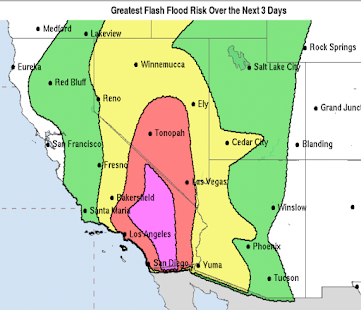Comments on Two "New York Times" Articles
The first, "When Warnings Don't Work," was published May 28 but I just saw it for the first time. Obviously, warnings do work as anyone who has read my book or studied the issue knows. The graph below, of declining tornado death rates (deaths per million population) speaks to the effectiveness of the storm warning system.
The article quotes Dr. Harold Brooks of the National Severe Storms Laboratory on this year's deaths. I agree that we do not know the specifics, yet, as to why so many people died.
However, Harold and I have exchanged a number of emails pertaining to the influence, or lack thereof, of the power being out for 12 to 16 hours before the killer tornadoes arrived in Alabama on April 27th where more than 300 died. I believe the inability to use television (#1 source for tornado warnings according to four studies), internet, and, in some or many cases, cell phones and local and NOAA weather radio influenced the high death toll. Harold believes the lack of electricity was "insignificant."
(I'll repeat my offer to email a copy of my study. Just request it at MSMITH [at] AccuWeather [dot] com. )
If I am correct, the inability to obtain timely warnings on April 27 proves the value of the warning system.
The second article is from today's Times. I refer you to Dr. Roger Pielke, Jr.'s commentary on the article. I bring it up as I did the same calculations (independently) pertaining to global per capital food production and the Times' figures presented in its graphs are correct -- per capita food production is at record high levels.
That said, the information in the graphs contradicts the premise of the article, that global warming is constricting food supplies.
The article quotes Dr. Harold Brooks of the National Severe Storms Laboratory on this year's deaths. I agree that we do not know the specifics, yet, as to why so many people died.
However, Harold and I have exchanged a number of emails pertaining to the influence, or lack thereof, of the power being out for 12 to 16 hours before the killer tornadoes arrived in Alabama on April 27th where more than 300 died. I believe the inability to use television (#1 source for tornado warnings according to four studies), internet, and, in some or many cases, cell phones and local and NOAA weather radio influenced the high death toll. Harold believes the lack of electricity was "insignificant."
(I'll repeat my offer to email a copy of my study. Just request it at MSMITH [at] AccuWeather [dot] com. )
If I am correct, the inability to obtain timely warnings on April 27 proves the value of the warning system.
The second article is from today's Times. I refer you to Dr. Roger Pielke, Jr.'s commentary on the article. I bring it up as I did the same calculations (independently) pertaining to global per capital food production and the Times' figures presented in its graphs are correct -- per capita food production is at record high levels.
That said, the information in the graphs contradicts the premise of the article, that global warming is constricting food supplies.





Comments
Post a Comment